…The Ride of Your Life
Leslie and I arrived at Miracle Farm in Brenham Texas with great excitement for our Natural Lifemanship Rhythmic Riding Immersion. This was the next stage of our education: an advanced intensive training designed to help us experience and understand more deeply how rhythmic patterned sensory input and movement helps a person learn to manage – or regulate – themselves through stressful or emotional moments of life.
Research shows that connected, attuned and healthy relationships are the paths (literally: neural pathways) to building resilience and to overcoming the effects of complex trauma on our brain and our body. To create that kind of relationship, a person has to be able to manage themselves first; to understand when fear, anger or defensiveness is present, and to be able to do something constructive with those feelings. We call this “regulation”.
Our group for this training was small, and the trust for each other was immediate. That, we would soon learn, was important as the work we were to do over the next three days was going to require vulnerability, persistence, failure, change, support and a willingness to risk it all. Our goal was to build a relationship with a horse that puts connection above all else, recognize when “compliance” or “dissociation” is offered instead of connection, and actually ride/dance to the rhythm of music by the time we left on Sunday.
To prepare ourselves for the work at hand, each day started with a mindfulness practice and drumming exercises designed to get us in touch with our own internal rhythms, and to find ways to merge that with our partners. Together we had to learn to dance independently and also in sync, often at the same moment.
We met Pete in an open arena with four other horses. He seemed somewhat willing to notice that we were there and offered, at a distance, a bit of connection. Pete stood alone and independent, he was attractive, and had the cutest white snip on his nose. Leslie and I chose him as our relationship partner for the weekend.
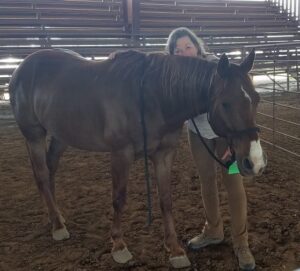 Other than the fact that Pete lives at Miracle Farm, we knew nothing about him. We were excited, and began the process of attuning our senses to Pete’s non-verbal communication, his rhythm, his desires and his ability to connect when asked. It was Leslie’s job to establish our first connection and to obtain his consent in putting on a halter, but only five minutes into the process we knew one thing more – when asked to connect Pete can be aggressive. Ears pinned, nose out, and at a fast pace, he moved toward Leslie. He made it very clear how he felt about connection with us and our request for relationship!
Other than the fact that Pete lives at Miracle Farm, we knew nothing about him. We were excited, and began the process of attuning our senses to Pete’s non-verbal communication, his rhythm, his desires and his ability to connect when asked. It was Leslie’s job to establish our first connection and to obtain his consent in putting on a halter, but only five minutes into the process we knew one thing more – when asked to connect Pete can be aggressive. Ears pinned, nose out, and at a fast pace, he moved toward Leslie. He made it very clear how he felt about connection with us and our request for relationship!
Deep breath; we had our work cut out for us this weekend. Was this acceptable behavior? Do we recognize similar behavior in other parts of our lives? How do we respond? Do we allow it? Does Pete really desire a connected relationship with us, or is that just our “thing”? And how do we help Pete change this mal-adaptive behavior (behavior meant to keep him safe in other situations, but not appropriate in this situation) through a connection and not by punishment?
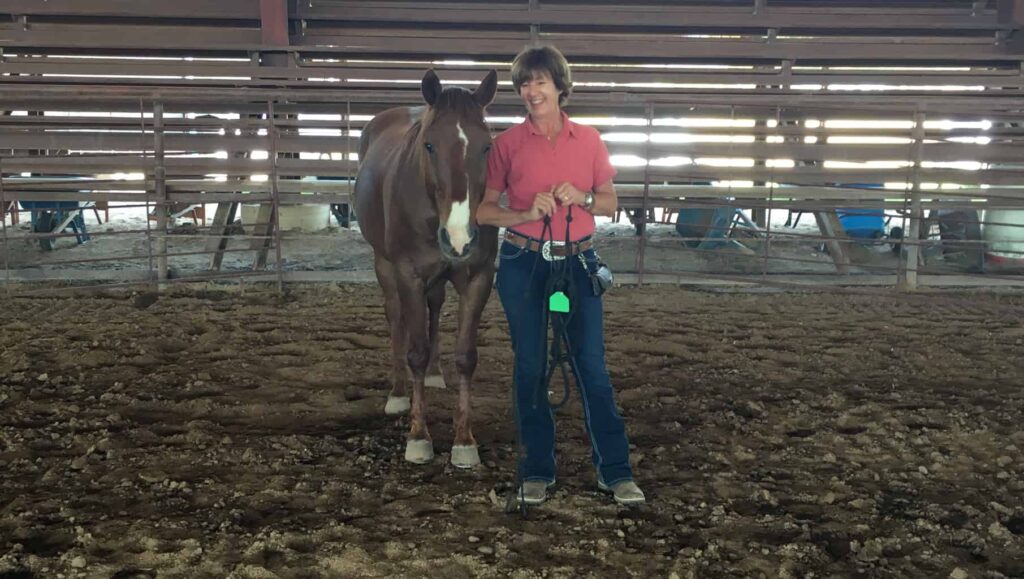 Over the next three days, Leslie, Pete and I climbed what seemed to be a staircase. With each step up – and often when we felt like we’d left the aggressive behavior behind – Pete brought it out again. At first we were shocked, certain that we had overcome that on the previous step! By Saturday afternoon we kept seeing the same pattern emerge. Every time we moved forward with deeper connection Pete became very uncomfortable. His stress started to rise and the negative behavior returned, however now a new adaptation was added: whenever the stress reached a certain point, Pete started to pump his hind legs up and down. We thought that he was trying to regulate, but dang! Was all of this too much? Should we slow down? Should we speed up? What? Clearly, Pete was not the only one going through this process, and Leslie and I learned to open ourselves to the feedback from each other. Whenever one of us began to doubt the process or our attempts to move through it, the other filled in with support. We often wondered if it was Pete’s behavior that was causing the defensiveness in our own brains and bodies, or – was it the other way around?
Over the next three days, Leslie, Pete and I climbed what seemed to be a staircase. With each step up – and often when we felt like we’d left the aggressive behavior behind – Pete brought it out again. At first we were shocked, certain that we had overcome that on the previous step! By Saturday afternoon we kept seeing the same pattern emerge. Every time we moved forward with deeper connection Pete became very uncomfortable. His stress started to rise and the negative behavior returned, however now a new adaptation was added: whenever the stress reached a certain point, Pete started to pump his hind legs up and down. We thought that he was trying to regulate, but dang! Was all of this too much? Should we slow down? Should we speed up? What? Clearly, Pete was not the only one going through this process, and Leslie and I learned to open ourselves to the feedback from each other. Whenever one of us began to doubt the process or our attempts to move through it, the other filled in with support. We often wondered if it was Pete’s behavior that was causing the defensiveness in our own brains and bodies, or – was it the other way around?
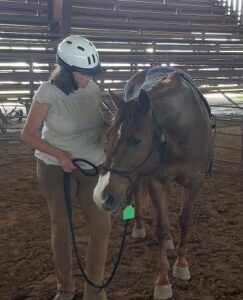 By Sunday morning, we were not sure that our rhythmic ride was going to happen by the afternoon. We were open to all possibilities and stayed committed to an attuned connection with Pete. However, by mid-morning, Pete had said “yes” to the bareback pad, and so it was time to ask if we could ride. Like all of the previous steps, he aggressively said “no” at first, only this time we got to “yes” much quicker. I was the first to ride, and within minutes we were fluidly moving around the pen. We found stop, go, left and right without the use of my hands or reins. Leslie had the same type of ride. We exhaled and broke for lunch early. The three of us had overcome what had once been a brick wall boundary – together.
By Sunday morning, we were not sure that our rhythmic ride was going to happen by the afternoon. We were open to all possibilities and stayed committed to an attuned connection with Pete. However, by mid-morning, Pete had said “yes” to the bareback pad, and so it was time to ask if we could ride. Like all of the previous steps, he aggressively said “no” at first, only this time we got to “yes” much quicker. I was the first to ride, and within minutes we were fluidly moving around the pen. We found stop, go, left and right without the use of my hands or reins. Leslie had the same type of ride. We exhaled and broke for lunch early. The three of us had overcome what had once been a brick wall boundary – together.
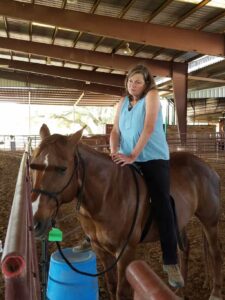 After lunch, we saddled up, and it came as no surprise that Pete provided us with the opportunity to work through some more stress. But now, his former aggressiveness had changed to just a little bit of defensiveness. Once again, I was the first to step on and this time there was nothing to work through! Pete and I headed to the big arena, both of us a little nervous for the unknown that lay ahead. Two songs played as we warmed up in a walk, and then my first song (“Fly” by Celine Dion) came on. Pete and I found our Rhythm quickly, but I honestly have no idea how we did it. There was no technique involved; we just felt each other. We found a walk and a trot beautifully, and – somewhere in that song – we found trust. We were totally connected, both of us feeling the power of the moment.
After lunch, we saddled up, and it came as no surprise that Pete provided us with the opportunity to work through some more stress. But now, his former aggressiveness had changed to just a little bit of defensiveness. Once again, I was the first to step on and this time there was nothing to work through! Pete and I headed to the big arena, both of us a little nervous for the unknown that lay ahead. Two songs played as we warmed up in a walk, and then my first song (“Fly” by Celine Dion) came on. Pete and I found our Rhythm quickly, but I honestly have no idea how we did it. There was no technique involved; we just felt each other. We found a walk and a trot beautifully, and – somewhere in that song – we found trust. We were totally connected, both of us feeling the power of the moment.
Then it was time to step off. I was overcome by the intensity and the work of the weekend that had culminated in the past 30 minutes that, as a person who has many horses living on her own property, I had never felt before.
Then, it was Leslie’s turn to fly. And while that is her story to tell, I believe she had a very similar experience. I kept the beat for her as well, and the final song found the three of us walking together, Leslie on Pete, she and I holding hands. Only the three of us could really know where we had been together, all that had been accomplished, and the connections that had been developed between us.
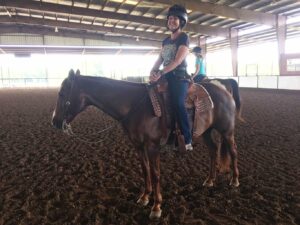 At the end of this type of immersive experience there is usually an opportunity to reflect on and talk about all that you have learned. It is these final moments of the training that Leslie and I learned a little more about Pete. He had participated in these type of trainings before, but he had never been able to complete them. His aggressive and defensive behavior had been evident, but he had also displayed signs of colic (stomach ache), severe diarrhea, and lameness. In fact, Pete had recently seen three different veterinarians in the farm’s attempt to figure out what was causing the lameness issues. They saw it, but could not find any medical reason for it.
At the end of this type of immersive experience there is usually an opportunity to reflect on and talk about all that you have learned. It is these final moments of the training that Leslie and I learned a little more about Pete. He had participated in these type of trainings before, but he had never been able to complete them. His aggressive and defensive behavior had been evident, but he had also displayed signs of colic (stomach ache), severe diarrhea, and lameness. In fact, Pete had recently seen three different veterinarians in the farm’s attempt to figure out what was causing the lameness issues. They saw it, but could not find any medical reason for it.
Unbeknownst to us, Miracle Farm and Natural Lifemanship were wondering if Pete’s physical condition had something to do with his adaption to his environment and life on the farm. Leslie and I happened to be next in the line of folks that had the opportunity to help him work through his difficulties. We saw his shallow breathing, we heard the stomach rumbling, and we were aware of several other physical aspects of his adaptive behavior, but he never colicked, and he absolutely never took a faltering step during our rides of a lifetime. Pete made it through – he had crossed a threshold that he had never crossed before. Along the way he had also developed some new neural pathways that would allow him to do it again. Leslie and I are so grateful for those that had helped Pete before us, and were honored beyond our imagination to have been on the part of the journey that allowed him to cross the final threshold.
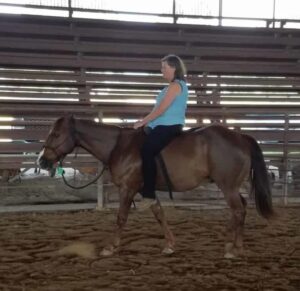 This was an intense weekend. At each step along the way we had to be willing to risk the relationships we had developed to see if we could take them one step further, one step healthier. This is the work that our clients – individuals who have experienced complex trauma in their own lives – their families, and their friends must be willing to do in order to heal and regain their life and relationships.
This was an intense weekend. At each step along the way we had to be willing to risk the relationships we had developed to see if we could take them one step further, one step healthier. This is the work that our clients – individuals who have experienced complex trauma in their own lives – their families, and their friends must be willing to do in order to heal and regain their life and relationships.
We see this frequently at Windows to My Soul. An individual makes a huge breakthrough, or finds a subtle change that allows them to deepen their connections and discover more resilience, direction, or empowerment. Yes, it can and does happen, but it is often not a “big bang” moment. We frequently have to climb that same staircase that Pete climbed, and with every step there is the opportunity to develop a new neural pathway to success instead of the old one that has us stuck in and feeling trauma. Over time, conscious choices begin to help direct us toward the new path, leading to an implicit neural pathway that creates successful, healthy, connected relationships automatically.
We know that the next time Pete is asked if he would like to participate in a training or carry a rider that his brain and his body might feel and express the same automatic reaction (old neural pathway) to the request. But we also know that he has developed a new pathway that will allow for healthier relationships, and an ability to help him recognize the universal need for connection. Once, only one choice was possible for him. Now there are two.
It is Leslie’s and my sincere wish that Pete will be surrounded by folks who understand that, and are willing to support Pete as he strengthens his pathways to connection, particularly when reverting to the old pathway can be so much easier.
And if Miracle Farm is ever ready, our trailer will be hooked and ready to roll to Texas! Pete has a forever home at Windows to My Soul, any day, any time.
Edited by: Leslie Exter
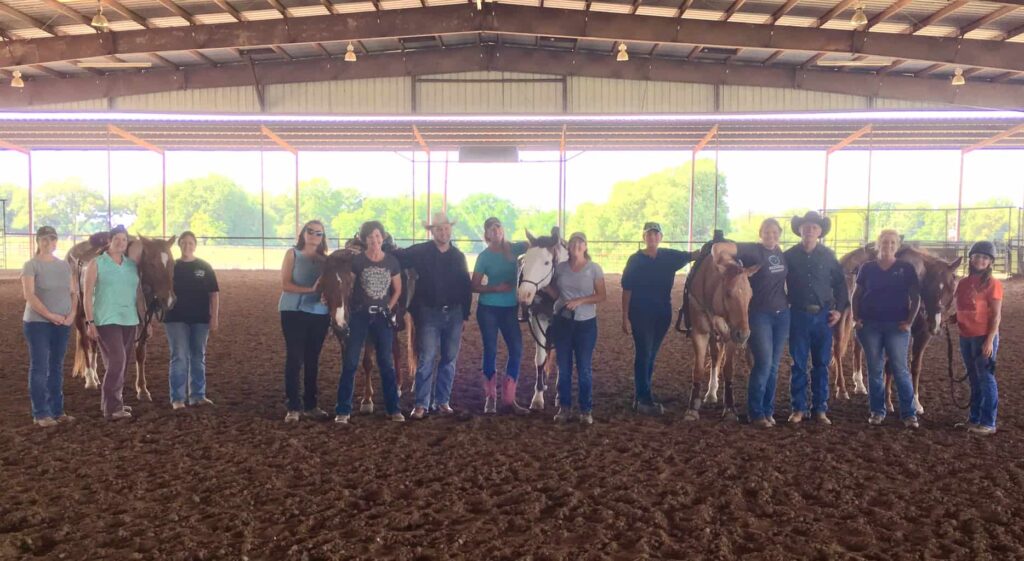
Experience Rhythmic Riding™ for yourself. Click the link below to sign up for our last RR Immersion training this year.

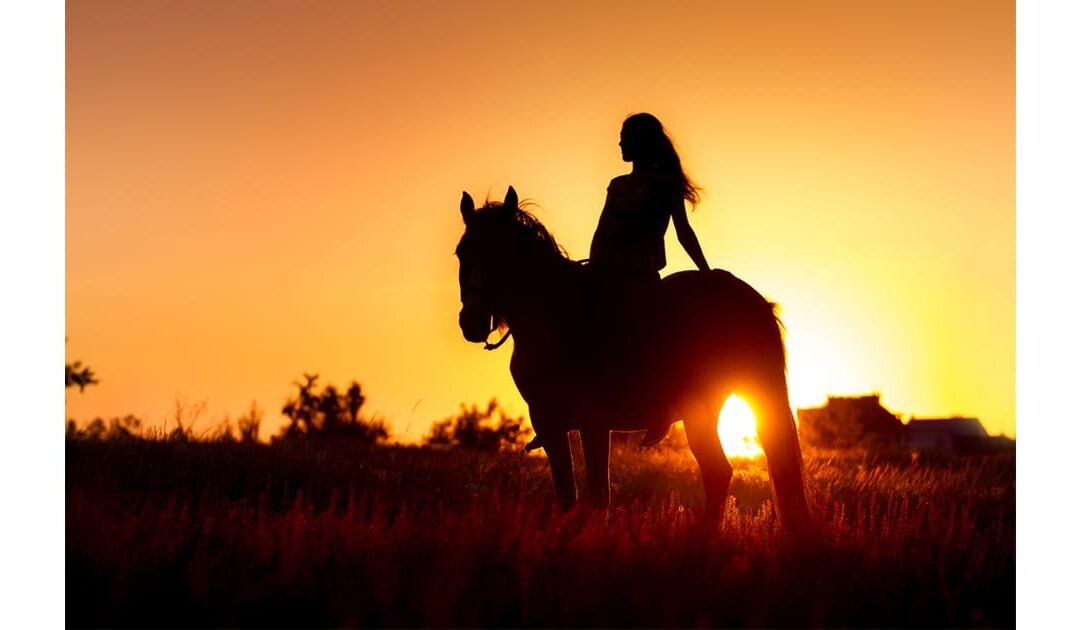
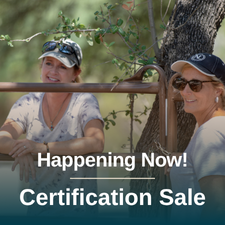
Recent Comments